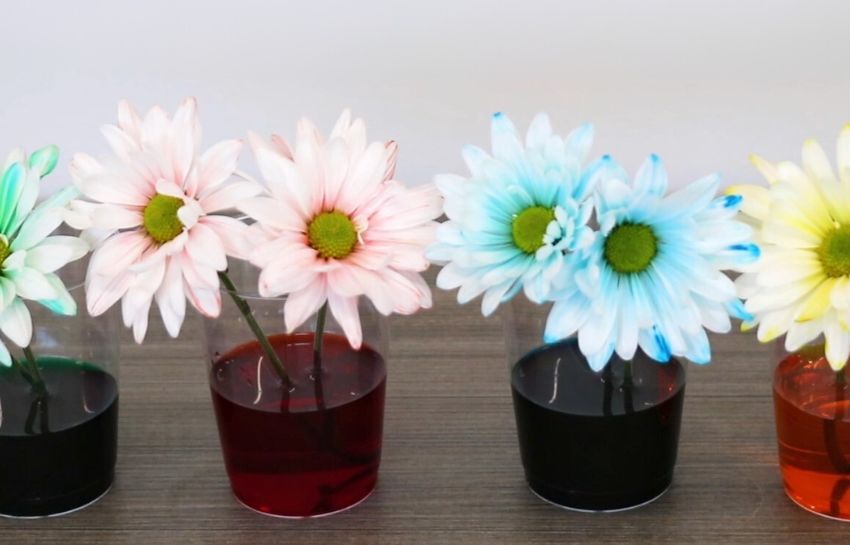Color Changing Flowers

Coloring flowers is an easy springtime science experiment that kids of all ages can do at home. This experiment will be fun for the children to observe, and it’s also a great way to learn about how plants “drink” water.
What You’ll Need
- Food Coloring
- White Flowers (we used daisies!)
- Several glasses, test tubes, or cups
Instructions
- Fill each cup with water.
- Add food coloring to each cup (the more you use, the deeper the color will be in the flowers)
- Cut the stems of the flowers so they will fit into the cups.
- Place flowers in each cup and leave for 24 hours.
- Observe the change in colors in the petals. (If your flowers haven’t changed colors in this time, add more food coloring to each cup.)
- Let the flowers sit and continue to watch them change. (See questions below to ask your child while waiting to see the results.)
- Enjoy your beautiful, colorful flowers and discuss your observations!
As you wait to see the results, make some more predictions:
- Which color will be soaked up first?
- How long will it take?
- Which color will create the darkest shade in a flower?
- Which color will create the lightest shade in a flower?
Scientific Explanation
Flowers are living things that need nourishment to grow and thrive. Using their roots, flowers “drink” water up into their stems, leaves, and flowers to make food. Eventually, the water evaporates from the plants—very similar to a human sweating. This is called transpiration. Even when you cut a flower and it has no roots, it can still do this!
More water is pulled up from below to fill the empty space left by transpiration. This cycle is called capillary action. This happens because water sticks to itself, which is called cohesion. The food coloring does not harm the plant at all, it just allows us to watch the journey of the water traveling through a plant.




